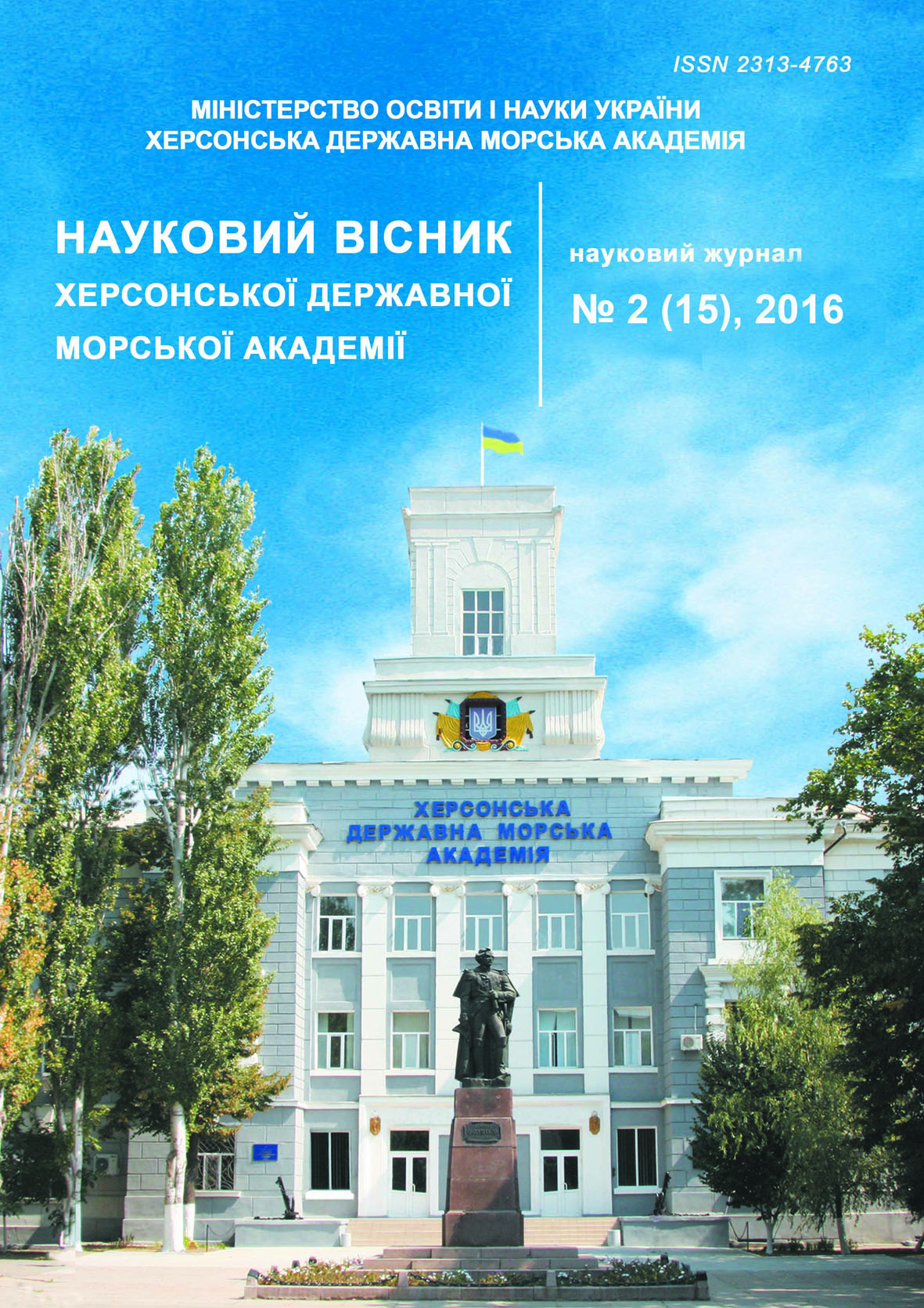ОБ АКТУАЛЬНЫХ ВОПРОСАХ ПОДГОТОВКИ МОРСКИХ СПЕЦИАЛИСТОВ В ХЕРСОНСКОЙ ГОСУДАРСТВЕННОЙ МОРСКОЙ АКАДЕМИИ
Анотація
У даній статті запропоновано ряд кроків, необхідних для переходу на дворівневу систему морської освіти, а також представлена структурна схема такої системи для Херсонської державної морської академії. Основною метою дослідження був розгляд і розробка порядку переходу ХДМА на дворівневу систему морської освіти, користуючись ситуацією, що створилася у зв’язку з реформуванням системи вищої освіти України, а також майбутнім переходом України до ЄС. У статті велика увага приділяється розробці навчальних планів підготовки морських фахівців усіх рівнів: молодшого бакалавра, бакалавра та магістра. Визначено місце практичної підготовки в цілісній системі підготовки морських фахівців. Виділено особливості другого рівня підготовки моряків. Надано загальні рекомендації з організації заочної форми навчання з урахуванням дворівневої системи морської освіти. У роботі показано, що перехід ХДМА до дворівневої системи морської освіти дозволить підвищити авторитет Академії при проходженні різного роду аудитів, а також її конкурентоспроможність на світовому ринку морської освіти.
Посилання
2. Tymofieieva, O.Ya. (2015). Istoriia morskoi osvity v Ukraini ta suchasni naukovi pidkhody do formuvannia sotsialno-komunikatyvnoi kompetentnosti maibutnikh sudnovodiiv. Visnyk Natsionalnoi akademii Derzhavnoi prykordonnoi sluzhby Ukrainy, 5, 1-13.
3. Kozyr’, L.A. (1999). Standarty morskoho obrazovanyia. Sbornyk nauchnykh trudov OGMA. Sudovozhdenye, 1, 67-74.
4. Normatyvna baza v sferi pidhotovky ta dyplomuvannia moriakiv. itcs.org.ua. Retrieved from http://www.itcs.org.ua/ua/normativna-baza-v-sferi-pidgotovki tadiplomuvannya- moryakiv.
5. Kozyr’, L.A. (2001). Morskoe obrazovanye v Turtsyy. Sbornyk nauchnykh trudov OGMA. Sudovozhdenye, 3, 100-105.
6. Berzins, J., & Barbare, I. (2013). Development of maritime human resources and education. Career education in Latvian maritime academy. European integration studies, 7, 14-17.
7. Studies’ programs. am.gdynia.pl. Retrieved from http://www.am.gdynia.pl/.
8. Academic Handbook. wmu.se. Retrieved from http://www.wmu.se/.
9. Graduate Program. usmma.edu. Retrieved from http://www.usmma.edu/.
10. Academic brochure for undergraduate & postgraduate programmes. imu.edu.in. Retrieved from http://www.imu.edu.in/.
11. Model Course 7.01 Master and chief mate (2014). London : IMO.
12. Model Course 7.02 Chief engineer officer and second engineer officer (2014). London : IMO.
13. Model Course 7.03 Officer in charge of a navigational watch (2014). London : IMO.
14. Model Course 7.04 Officer in charge of an Engineering watch (2014). London :IMO.
15. Model Course 7.08 Electro-Technical Officer (2014). London : IMO.
16. Zakon Ukrainy «Pro vyshchu osvitu», 2014. zakon2.rada.gov.ua. Retrieved from http://zakon2.rada.gov.ua/laws/show/1556-18/.
17. Mezhdunarodnaia konventsyia o podhotovke y dyplomyrovanyy moriakov y nesenyy vakhti (2011). London : IMO.






